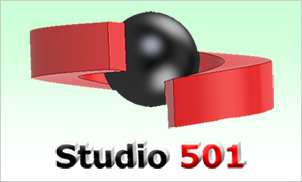F.A.Q. - Oil Filtration
Why filter instead of changing the hydraulic oil?
By filtering you not only clean the reservoir - you clean the entire hydraulic system. Plus, your customer has got no down time because the machine has got to run whilst the online filtration.
Who is your clientele?
Every company that uses hydraulic oil on their machines e.g. power packs, injection molders, bending presses and many more…
How much capital do you need to start your own mobile oil filtration Business?
Provided you build the machines yourself you will not need not more than max.
€ 2000.00
€ 2000.00
What can you charge the customer for your filtration service?
The suggested rate is 1/3 of the price of new Hydraulic oil.
How much revenue can one machine create?
e.g., the smallest unit (501-2-29) has got a flow rate of +- 250 l/hr. The reservoir you are filtering holds 300 litres. We assume you need 30 passes(average) to reach the expected cleanliness level, equals 36 hrs of operation = 1.5 days. You invoice the customer €0.35 x 300 = €105.00 of which 80% is gross profit.
Reservoir 300 litre
30 passes (501-2-29)
Duration 1.5 days
Revenue crated at € 0.35/litre = € 105.00
Conclusion: the filtration unit will have a BEP latest within 2 months.
Reservoir 300 litre
30 passes (501-2-29)
Duration 1.5 days
Revenue crated at € 0.35/litre = € 105.00
Conclusion: the filtration unit will have a BEP latest within 2 months.
How to build an oil filtration machine yourself?
You need:
- a complete set of tech drawings and operations manual,
- a workshop with hand tools,
- a local hard ware and hydraulic component supplier,
- a sheet metal manufacturer (trolley),
- a metal milling supplier (manifold aluminum).
What is Oil Cleanliness and ISO codes?
The ISO cleanliness code is used to quantify particulate contamination levels per milliliter of fluid at 3 sizes 4µ, 6µ and 14µ. The ISO code is expressed in 3 numbers (i.e. 19/17/14). Each number represents a contamination level code for the correlating particle size. The code includes all particles of the specified size and larger. It is important to note that each time a code increases the quantity range of particles is doubling.
Maintenance of the filtration Machine
Regular overall cleaning and checking for loose connections.
How long do the filters last?
The life of a filter depends entirely on the contamination level (cleanliness) of the fluid to be filtered, +-20000 liters – this is a ball park figure from experience.
What happens when there is water in the hydraulic oil?
Water - even emulsified water - will immediately clog up the filters and stop the filtration machine via the pressure switch. Only a Vacuum Dehydrator can remove emulsified water from oil.
Oil Sampling
Oil sampling is a procedure for collecting a volume of fluid from hydraulic machinery for the purpose of oil analysis to determine the ISO cleanliness level.
Oil Sampling can be done in two ways:
Oil Sampling can be done in two ways:
- With a manual vacuum pump kit, the sample then needs be sent to an independent laboratory for analysis.
- Portable oil particle counter, directly connecting an online laser particle counter to the hydraulic system through sample ports provides the most accurate analysis of the cleanliness as it determines the exact ISO count immediately with little effort.
Crackle Test
The crackle test is a standard laboratory test to detect the presence of water in lubricating oil. A drop of oil is placed on a hotplate that has been heated to approximately +- 200 °C (400° F). The sample then bubbles, spits, crackles or pops when moisture is present.
Contamination
Hydraulic systems rely on vital fluids to transfer and amplify power and lubricate critical components. Protecting these fluids from contamination is top priority. Fluid is the most important part of any hydraulic system and when systems fail, the cause is most often related to fluid/fluid contamination.
At least 80 percent of all hydraulic systems fail due to contaminated or aging hydraulic fluid. Contamination causes aging/degradation of fluids and therefor hydraulic failure and down time.
At least 80 percent of all hydraulic systems fail due to contaminated or aging hydraulic fluid. Contamination causes aging/degradation of fluids and therefor hydraulic failure and down time.
Contact us

e-mail: studio501@gmx.com
cell: 0043 677 631 169 92
cell: 0043 677 631 169 92





















































































